Cultural Tours in Uganda are not as popular as visiting mountain gorillas and game drives. This shouldn’t be the case because Uganda has so much to offer beyond wildlife. There are reasons why Uganda is referred to as the Pearl of Africa. Ugandans are one of the friendliest people on earth. They are accepting and easily get along with foreigners. One of the reasons for this is that the country’s ethnic groups have learnt to live in harmony with each other. This has made it easy for Ugandans to accept foreigners without any suspicions whatsoever. Uganda is also a country with a strong cultural heritage. This is demonstrated by the numerous cultural sites and tribes in the country.
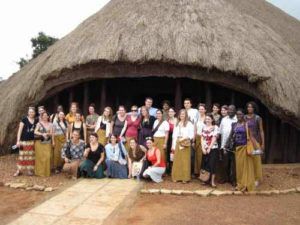 To be more specific, there are 65 tribes in Uganda including the Acholi, Alur, Bafumbira, Baganda, Bagishu, Bagwere, Bakiga, Bamba, Banyoro, Banyuli, Bateso, Batooro, Batwa, Jonam, Karamajong, Kumam, Langi, Lugbra, Madi, Jopadhola and Tepeth. Each group has its own unique language, cultural practices and norms. Most have a traditional King or chief as head. There was a time when these Kingdoms and Chiefdoms wielded so much power and influence that the presidents then decided to abolish them. It was only about 30 years ago that the president revived them. On a cultural tour, visitors have an opportunity to understand the culture of these indigenous groups by visiting a family or attending their cultural performances.
To be more specific, there are 65 tribes in Uganda including the Acholi, Alur, Bafumbira, Baganda, Bagishu, Bagwere, Bakiga, Bamba, Banyoro, Banyuli, Bateso, Batooro, Batwa, Jonam, Karamajong, Kumam, Langi, Lugbra, Madi, Jopadhola and Tepeth. Each group has its own unique language, cultural practices and norms. Most have a traditional King or chief as head. There was a time when these Kingdoms and Chiefdoms wielded so much power and influence that the presidents then decided to abolish them. It was only about 30 years ago that the president revived them. On a cultural tour, visitors have an opportunity to understand the culture of these indigenous groups by visiting a family or attending their cultural performances.
The most popular cultural encounters in Uganda are the Batwa trail in Mgahinga National Park, Visiting the Ik and Karamojong people in northeastern Uganda. The Batwa trail involves visiting the Batwa pygmies who were evicted from Mgahinga National Park to create room for the endangered mountain gorillas. The Batwa Trail in Mgahinga is different from the Batwa visit in Bwindi because it is more comprehensive. You get a chance to be led into the forest by the Batwa themselves. While with them, you can learn about their ancient hunting practices and understand why it has been so hard for them to adapt to life outside the forest.
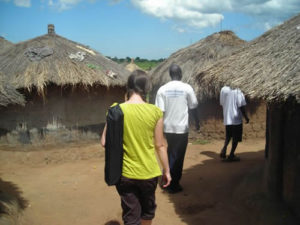 The Ik people are equally interesting. They are one of the smallest tribal groups in Uganda – Less than 10,000 in number. The Ik people lived in Kidepo Valley National Park but were also displaced once the park founded. According to the Ik, children shouldn’t stay with parents in the same house once they reach the age of 3 or 4. They are sent to live in a separate house with their age-mates. Once they reach, the parents stop taking care of them altogether. Their neighbors the Karamojong also have interesting cultural practices. First, the Karamojong keep their kids for as long as possible. Second, they are nomadic pastoralists with a similar way of life to the Masai. The Karamojong depend on their cows for almost everything. While visiting them, you can take part in their traditional dances, milk a cow or two, go out grazing with the men or buy one of their local art pieces. If you are looking for true indigenous African tribes which have not fully embraced modern habits/culture, then visiting the IK or Karamojong is highly recommended. You may be interested in how to plan a trip to Uganda.
The Ik people are equally interesting. They are one of the smallest tribal groups in Uganda – Less than 10,000 in number. The Ik people lived in Kidepo Valley National Park but were also displaced once the park founded. According to the Ik, children shouldn’t stay with parents in the same house once they reach the age of 3 or 4. They are sent to live in a separate house with their age-mates. Once they reach, the parents stop taking care of them altogether. Their neighbors the Karamojong also have interesting cultural practices. First, the Karamojong keep their kids for as long as possible. Second, they are nomadic pastoralists with a similar way of life to the Masai. The Karamojong depend on their cows for almost everything. While visiting them, you can take part in their traditional dances, milk a cow or two, go out grazing with the men or buy one of their local art pieces. If you are looking for true indigenous African tribes which have not fully embraced modern habits/culture, then visiting the IK or Karamojong is highly recommended. You may be interested in how to plan a trip to Uganda.
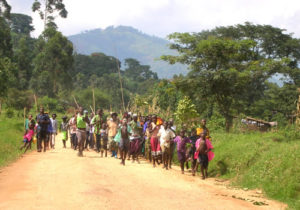 The Bagisu culture is also very interesting. This tribe is found in Eastern Uganda and are famous because of their ancient circumcision rituals and dances known as “Kadodi”. Once a young man reaches of age in the Bagisu, he is initiated into manhood by undergoing circumcision in front of the public and with no pain killers. Circumcision in hospitals are not recognized or accepted and will be considered an act of cowardice. During the circumcision ceremony, the young man has to move to each of his relatives for about a week to seek their blessings. These movements to his relatives involves dancing and merry making in which he is escorted by friends and relatives. Tourists can join in the “Kadodi” dance to escort one of the young men briefly or go straight to the circumcision ground and watch as many young men are circumcised in front of everyone. A more controversial circumcision ceremony is practiced by the Sabiny tribe. The Sabiny only circumcise girls on reaching maturity. This practice has been opposed by women and other human rights activities but the still goes on quietly.
The Bagisu culture is also very interesting. This tribe is found in Eastern Uganda and are famous because of their ancient circumcision rituals and dances known as “Kadodi”. Once a young man reaches of age in the Bagisu, he is initiated into manhood by undergoing circumcision in front of the public and with no pain killers. Circumcision in hospitals are not recognized or accepted and will be considered an act of cowardice. During the circumcision ceremony, the young man has to move to each of his relatives for about a week to seek their blessings. These movements to his relatives involves dancing and merry making in which he is escorted by friends and relatives. Tourists can join in the “Kadodi” dance to escort one of the young men briefly or go straight to the circumcision ground and watch as many young men are circumcised in front of everyone. A more controversial circumcision ceremony is practiced by the Sabiny tribe. The Sabiny only circumcise girls on reaching maturity. This practice has been opposed by women and other human rights activities but the still goes on quietly.
Apart from the 65 tribes, Uganda is a country with numerous cultural sites. The government has tried to promote these sites to attract more tourists but with a lot of challenges. One of the main challenges is that these sites are owned by the cultural institutions or individuals who are not willing to share 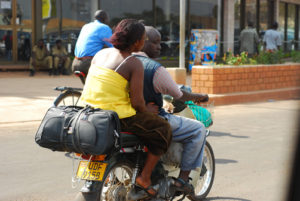 management with the government. Government is hesitant to commit large amounts of resources to renovating many of the sites without proper systems of accountability in place. A few like the Kasubi tombs in the Capital and others in the larger towns have benefited from government and international Agency funds but this is not enough. The focus should not only be on a few selected sites or government museums in Kampala but to all the little known cultural sites in the country. This is particularly important because most of the Museums within Kampala city center have been too modernized and do not show real connection to Uganda’s past or its indigenous tribes. It is when you visit the remote cultural sites that you sense a real connection with the history of the particular tribe or ethnic people. These sites can be promoted and developed to attract more local and international tourists.
management with the government. Government is hesitant to commit large amounts of resources to renovating many of the sites without proper systems of accountability in place. A few like the Kasubi tombs in the Capital and others in the larger towns have benefited from government and international Agency funds but this is not enough. The focus should not only be on a few selected sites or government museums in Kampala but to all the little known cultural sites in the country. This is particularly important because most of the Museums within Kampala city center have been too modernized and do not show real connection to Uganda’s past or its indigenous tribes. It is when you visit the remote cultural sites that you sense a real connection with the history of the particular tribe or ethnic people. These sites can be promoted and developed to attract more local and international tourists.
As the country gets more modernized and citizens become more disconnected from the way of life of their ancestors, these cultural sites will play a big role for those who seek to discover their roots. Or learn 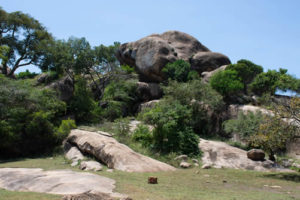 about how things were done before. Each year more and more international tourists are visiting these sites and it will be the same as Uganda’s middle class and economy grows. More Ugandans will start to spend a lot to see these sites.
about how things were done before. Each year more and more international tourists are visiting these sites and it will be the same as Uganda’s middle class and economy grows. More Ugandans will start to spend a lot to see these sites.
The government of Uganda should begin actively protecting and preserving these cultural heritage sites by funding their renovation or partnering with the local cultural institutions and individuals who control these sites. The sites are so many but we can discuss the more popular ones that you can visit in our 1 day Kampala city tour. If you are only interested in the sites in the capital, you might want to check out the tourist attractions in Kampala or what you can do during a student trip to Uganda. Let’s continue with discussing the cultural sites.
Cultural Sites in Uganda
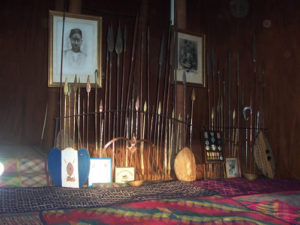 Kasubi Tombs: The tombs are one of the main treasures of the Kingdom of Buganda and a leading tourism attraction in Uganda. The tombs are found six kilometers away from the city center in Kampala. The tombs are a UNESCO World Heritage site and receive (used to receive) thousands of visitors in a year. You can easily reach it from Makerere University using the road to Rubaga and Mengo. The Kasubi tombs are the main burial grounds for the Kings (Kabakas) of Buganda as well as other royals. Four Kings of Buganda are buried in the tombs including Mutesa II, Mwanga II, Daudi Chwa and Mutesa I. A large part of the tombs was recently destroyed by fire set up by unknown people. This triggered a wave of protests and demonstrations by Baganda loyalists. The culprits have never been caught and a lot of speculations remain. Renovations have been taking place to bring it back to its former state with funding from the Uganda and Japanese government.
Kasubi Tombs: The tombs are one of the main treasures of the Kingdom of Buganda and a leading tourism attraction in Uganda. The tombs are found six kilometers away from the city center in Kampala. The tombs are a UNESCO World Heritage site and receive (used to receive) thousands of visitors in a year. You can easily reach it from Makerere University using the road to Rubaga and Mengo. The Kasubi tombs are the main burial grounds for the Kings (Kabakas) of Buganda as well as other royals. Four Kings of Buganda are buried in the tombs including Mutesa II, Mwanga II, Daudi Chwa and Mutesa I. A large part of the tombs was recently destroyed by fire set up by unknown people. This triggered a wave of protests and demonstrations by Baganda loyalists. The culprits have never been caught and a lot of speculations remain. Renovations have been taking place to bring it back to its former state with funding from the Uganda and Japanese government.
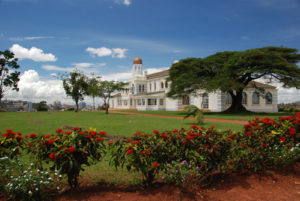 Kings Palace in Mengo and Parliament (Bulange): The Lubiri or Mengo palace is one of the residents of the Kabaka (King) of Buganda. It has a striking colonial architecture and covers an area of four square miles. The palace was built in 1885 and is hence a great place to go if one is interested in learning more about the history of the Baganda. The current Kabaka no longer uses this palace after it was attacked by government forces during the reign of his father Muteesa II. Visitor are free to visit during the week days. Just opposite the palace is Buganda’s main parliament locally known as Bulange. You can attend one of the parliamentary sessions to witness how the elders of Buganda are discussing issues pertaining to the Kingdom.
Kings Palace in Mengo and Parliament (Bulange): The Lubiri or Mengo palace is one of the residents of the Kabaka (King) of Buganda. It has a striking colonial architecture and covers an area of four square miles. The palace was built in 1885 and is hence a great place to go if one is interested in learning more about the history of the Baganda. The current Kabaka no longer uses this palace after it was attacked by government forces during the reign of his father Muteesa II. Visitor are free to visit during the week days. Just opposite the palace is Buganda’s main parliament locally known as Bulange. You can attend one of the parliamentary sessions to witness how the elders of Buganda are discussing issues pertaining to the Kingdom.
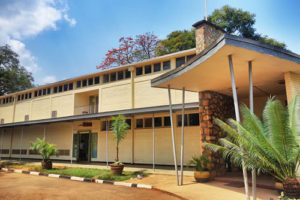 The Uganda Museum: The Uganda museum was built to help preserve Uganda’s history. The museum is without doubt the best place to visit if one is interested in learning about Uganda’s history and cultural heritage. This history and heritage is demonstrated through a collection of instruments, artifacts and recordings. The Uganda Museum was first built in 1908 but has undergone a series of renovations in the interior to give it a more modern look. Several instruments and tools are available to describe or demonstrate what Uganda was and is. They include musical instruments, traditional weapons (spears, arrows and bow), drums and archaeological remains to mention but a few.
The Uganda Museum: The Uganda museum was built to help preserve Uganda’s history. The museum is without doubt the best place to visit if one is interested in learning about Uganda’s history and cultural heritage. This history and heritage is demonstrated through a collection of instruments, artifacts and recordings. The Uganda Museum was first built in 1908 but has undergone a series of renovations in the interior to give it a more modern look. Several instruments and tools are available to describe or demonstrate what Uganda was and is. They include musical instruments, traditional weapons (spears, arrows and bow), drums and archaeological remains to mention but a few.
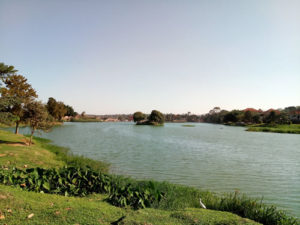 The Kabaka’s Lake: This lake is found close to the palace in Mengo on the outskirts of Kampala city. The Lake was created on the orders of Kabaka Mwanga II in 1880 to open an escape route through Lake Victoria in case of a civil war. The lake covers an area equivalent to five acres of land with calm waters that are home to beautiful birds and other wildlife. During his time, Kabaka Mwanga would swim and fish in the lake. The Kabaka didn’t achieve the dream of creating a channel to Lake Victoria though and the lake remains isolated. Visitors can go swimming, sport fishing or relaxation along the beautiful shores. There have been challenges maintaining the water level of the lake and curbing pollution from businesses operating nearby but it is still a place worth visiting.
The Kabaka’s Lake: This lake is found close to the palace in Mengo on the outskirts of Kampala city. The Lake was created on the orders of Kabaka Mwanga II in 1880 to open an escape route through Lake Victoria in case of a civil war. The lake covers an area equivalent to five acres of land with calm waters that are home to beautiful birds and other wildlife. During his time, Kabaka Mwanga would swim and fish in the lake. The Kabaka didn’t achieve the dream of creating a channel to Lake Victoria though and the lake remains isolated. Visitors can go swimming, sport fishing or relaxation along the beautiful shores. There have been challenges maintaining the water level of the lake and curbing pollution from businesses operating nearby but it is still a place worth visiting.
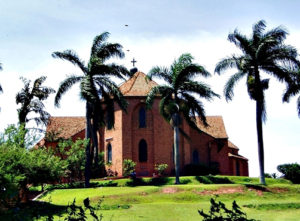 Namirembe and Rubaga Cathedrals: Namirembe Cathedral is the most prominent cathedral for members of the Anglican faith in Uganda just as Rubaga is to Roman Catholics. The Rubaga cathedral was built in 1880 on top of Rubaga hill while that in Namirembe in 1903 on top of Namirembe hill. Both cathedrals hold the highest offices of the two Christian denominations. It is where their highest ranking Bishops reside. The cathedrals are filled with Christians from around the city and country every Sunday for a chance to pray in the sacred arenas. The cathedrals also have cemeteries/tombs for former priests and bishops who came as missionaries during the early times of Christianity in Uganda.
Namirembe and Rubaga Cathedrals: Namirembe Cathedral is the most prominent cathedral for members of the Anglican faith in Uganda just as Rubaga is to Roman Catholics. The Rubaga cathedral was built in 1880 on top of Rubaga hill while that in Namirembe in 1903 on top of Namirembe hill. Both cathedrals hold the highest offices of the two Christian denominations. It is where their highest ranking Bishops reside. The cathedrals are filled with Christians from around the city and country every Sunday for a chance to pray in the sacred arenas. The cathedrals also have cemeteries/tombs for former priests and bishops who came as missionaries during the early times of Christianity in Uganda.
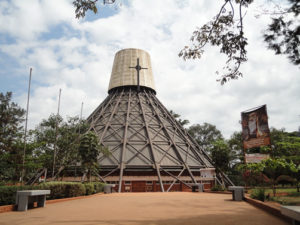 Uganda Martyrs Shrine in Namugongo: The Namugongo Martyrs Shrine is one of the most visited religious sites in Africa. Each year on the 3rd of June, millions of pilgrim’s flock the shrine to commemorate the death of 25 Christians of both the Anglican and catholic denomination who refused to give up their faith even in the face of death. In 1886, Kabaka Mwanga II of Buganda ordered the death of many Christians whom he felt had stopped respecting him after converting to Christianity. He found foreign religion a threat to his rule and control over his people. Several Christian from all denominations were brutally killed on the orders of the King in an attempt to stamp his authority. June 3rd is a public holiday in Uganda and both protestants and Catholics visit their respective shrines to pay homage to the Uganda Martyrs. You can read more about the Uganda Martyrs Day Celebrations in Uganda.
Uganda Martyrs Shrine in Namugongo: The Namugongo Martyrs Shrine is one of the most visited religious sites in Africa. Each year on the 3rd of June, millions of pilgrim’s flock the shrine to commemorate the death of 25 Christians of both the Anglican and catholic denomination who refused to give up their faith even in the face of death. In 1886, Kabaka Mwanga II of Buganda ordered the death of many Christians whom he felt had stopped respecting him after converting to Christianity. He found foreign religion a threat to his rule and control over his people. Several Christian from all denominations were brutally killed on the orders of the King in an attempt to stamp his authority. June 3rd is a public holiday in Uganda and both protestants and Catholics visit their respective shrines to pay homage to the Uganda Martyrs. You can read more about the Uganda Martyrs Day Celebrations in Uganda.
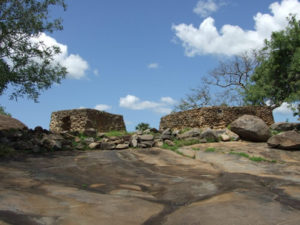 Fort Baker: Baker’s Fort is found twenty-nine kilometers away from Gulu town in Patiko. Also known as Fort Patiko, the facility was built Arab slave traders and later taken over by Sir Samuel Baker. Baker was a famous explorer was against slavery in all its forms. He took over the Fort in 1872 an effort to frustrate the Arab traders who had used the fort as a place to collect slaves from the region. The Fort is enclosed by a trench that is 15 feet deep and 16 feet wide. The trench was dug by slaves who had been captured by Arabs traders. Baker used the Port up to 1888 after which it was taken over by Emin Pasha and Charles Gordon. The Fort is a constant reminder of the evils of slavery with dark marks around the stones which is believed to be blood from slaves who were beheaded because they couldn’t make it to Egypt for sale.
Fort Baker: Baker’s Fort is found twenty-nine kilometers away from Gulu town in Patiko. Also known as Fort Patiko, the facility was built Arab slave traders and later taken over by Sir Samuel Baker. Baker was a famous explorer was against slavery in all its forms. He took over the Fort in 1872 an effort to frustrate the Arab traders who had used the fort as a place to collect slaves from the region. The Fort is enclosed by a trench that is 15 feet deep and 16 feet wide. The trench was dug by slaves who had been captured by Arabs traders. Baker used the Port up to 1888 after which it was taken over by Emin Pasha and Charles Gordon. The Fort is a constant reminder of the evils of slavery with dark marks around the stones which is believed to be blood from slaves who were beheaded because they couldn’t make it to Egypt for sale.
Bigo bya Mugenyi: This cultural site is located deep in Mubende District in a place called Ntusi. Bigo bya Mugenyi means “The Fort of a Stranger”. It is believed that the Bachwezi demi-gods lived in the area hundreds of years ago. They left several artifacts and earthworks that are of cultural importance to local people in the area. The earthworks are believed to have been made in the early 13th Century. This site is very remote and requires real perseverance and patience to get there. The roads to the site are not well paved and can be dusty or muddy depending on the season of the year. Bigo bya Mugenyi will get more visitors in the future if what is there can be preserved. To access the facility, visitors are required to cleanse themselves with water from a nearby stream. Washing one’s self ensures that you do not anger the gods in of the site.
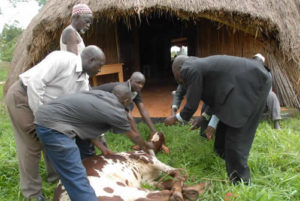 Mparo Tombs: The Mparo Tombs are found in Hoima District – 4 kilometers away in Mparo Division. The tombs are the burial site for the former Kings of Bunyoro. The great Kabalega of Bunyoro who gave the British colonial government a hard time is buried here. Kabalega led a rebellion against the British for a long time as they attempted to control his Kingdom. He was exiled along with Kabaka Mwanga of Buganda to the Seychelles Islands. The Mparo tombs are visited by many local people to seek blessings or honor their former king.
Mparo Tombs: The Mparo Tombs are found in Hoima District – 4 kilometers away in Mparo Division. The tombs are the burial site for the former Kings of Bunyoro. The great Kabalega of Bunyoro who gave the British colonial government a hard time is buried here. Kabalega led a rebellion against the British for a long time as they attempted to control his Kingdom. He was exiled along with Kabaka Mwanga of Buganda to the Seychelles Islands. The Mparo tombs are visited by many local people to seek blessings or honor their former king.
Karambi Tombs: These tombs are found in the town of Fort Portal. The tombs belong to the Kingdom of Tooro. Three Kings of Tooro are buried here – Olumi Kaboyo II, Rukidi III and Kyebambe Kamurasi. Each King has a tomb for himself with all his royal regalia. Other royal princesses and princess are also buried here. The Karambi Tombs hold great cultural significance to the Batooro and are hence a perfect site to visit if you want to learn more about their culture and monarchy. You will be impressed with the simple but unique architecture and royal instruments including giant drums, spears and other items that were personal to the specific King. The scenery around the tombs is beautiful with several large mango trees scattered around. There are plans to renovate them to modern standards to help generate revenue to the Kingdom of Tooro. Karambi tombs are located 6 kilometers away from the town center along the Kasese to Fort Portal road.
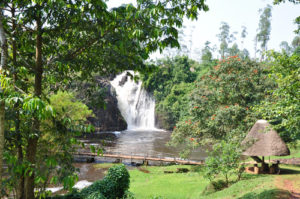 Ssezibwa Falls: The Ssezibwa falls are found in Mukono between the Kyagwe and Bugerere parishes. The waterfalls are an important cultural and spiritual site for the Baganda people and especially die-hard royalists. All Kings of Buganda have visited the Sezibwa falls to seek for blessings from their ancestors. Apart from the royals, hundreds of people come to a shrine on top of the falls to seek the blessings and favor from the gods. The falls are visited by many tourists who leave impressed by the beautiful scenery surrounding the place. One can enjoy rock climbing, primates viewing, birding, picnics or camping around the beautiful gardens of the falls.
Ssezibwa Falls: The Ssezibwa falls are found in Mukono between the Kyagwe and Bugerere parishes. The waterfalls are an important cultural and spiritual site for the Baganda people and especially die-hard royalists. All Kings of Buganda have visited the Sezibwa falls to seek for blessings from their ancestors. Apart from the royals, hundreds of people come to a shrine on top of the falls to seek the blessings and favor from the gods. The falls are visited by many tourists who leave impressed by the beautiful scenery surrounding the place. One can enjoy rock climbing, primates viewing, birding, picnics or camping around the beautiful gardens of the falls.
Nkokonjeru Tombs: These tombs are found in Mbarara District in an area called Kakiika. It is the burial ground for two of the previous Omugabes (Kings) of Ankole and other royal family members. Rutahaba Gasyonga II and Edward Solomon Kahaya II are buried in the tombs while 9 other royal graves are positioned outside.
Nakayima Tree: This tree is found in the District of Mubende. It is believed to be over 400 years old and is one of the biggest trees in Uganda. Legend has it that the tree was planted by the wife to a certain Nduhura called Nakayima. People would go to the tree to seek blessings and favor from their gods as they dealt with the challenges of life. People still go to seek blessings from the tree to this day. Tourists can visit this cultural site on their way to Kibale National Park. The main activity is going for a community walk or climbing the hill to see the main shrine. Expect to meet a lot of people at the site who have come to seek for blessings for their children and household. People also bring local beer and animals to sacrifice to the tree. The site is kept running by witch-doctors who are always in a trance, meditating and communicating to the spirits.
Katereke Prison Ditch: This ditch is a constant reminder of the brutality of some of Buganda’s Kings. Kabaka Kalema faced opposition from his siblings and decided to do the unthinkable. He captured all his brother and sisters – 30 in total and imprisoned them in a ditch until they all starved to death. The Katereke Prison Ditch is a reminder of this difficult time in the Buganda Kingdom and also the savagery Kabaka Kalema. Despite its connection with the brutality of the paranoid king, the site attracts many international visitors.
The Coronation Site in Buddo (Naggalabi): This site is located in Busiro Country on Buddo Hill and about sixteen kilometers away from Kampala city. Naggalabi is where the Kings of Buganda are crowned from after undergoing several preparations and rituals. Some believe that the Buganda kingdom was established here in the early 14th century. While visiting this coronation site, tourists can step on the very place and path taken by the present and past kings of Buganda. Visitors can also visit some of the other sacred sites in the area.
Itaaba Kyabanyoro: This site found a short distance away from Mbarara town. The site is important in the history of the Ankole Kingdom as the place where the last ruler (Known as Wamala) of the Bachwezi empire designed the sacred royal drum known as “Bagyendanwa”. The drum still exists to this day and is one of the revered cultural symbols of the Ankole kingdom. To reach this site, you need to drive along the Mbarara to Kabale road and the stop at Kinoni Rwampara.
Nyero Rock Paintings: To see the Nyero Rock paintings you have to travel East of Uganda. The paintings are located eight kilometers away from Kumi town along Ngora road. The amazing paintings were left behind by humans living in the area during the Iron age. The paintings show several symbols including canoes and animals that once roamed the area.
Kanyange and Nnamasole Baagalayaze Tombs: These tombs hold the remains of the mother of Kabaka Suuna II who was buried at the Wamala tombs. She was known as Nnamasole Kanyange. The tombs are located on a hill along the highway from Kampala to Bombo – very close to the Wamala tombs. The Nnamasole Tombs also keep the remains of the mothers to other Kabakas. Just like it is in other royal tombs, ceremonies involving rituals are frequently performed by traditionalists. A sacred drum is positioned at the tombs which is claimed to summon the spirit of King Suuna II.
The Wamala Tombs: Apart from the Kasubi tombs, Buganda has other tombs for their earlier kings. The Wamala tombs holds the remains of Kabaka Suuna 11. Kabaka Suuna is remembered as the first Kabaka (King) to allow foreign traders into Buganda. He had over 150 wives who gave birth to 218 children. The Wamala tombs are built on top of a hill with nice surroundings.
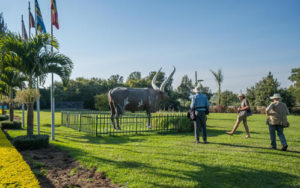 Igongo Cultural Centre: This is a privately owned cultural Centre found in Mbarara District along the highway to Kampala. The Centre is built on the grounds of the former palace of the King of Ankole. Mr. Tumusiime established this Centre to promote the culture of the people of Uganda and Africa as a whole. There is no better place to experience the culture of the people of Western Uganda than at the Igongo Cultural Centre. The Center has been built to high standards with beautiful gardens and views. The Centre has a museum, restaurant and nice craft shop. You can also buy local dictionaries and books about Uganda and the local tribes in Western Uganda. Igongo is a favorite stopover place for tourists heading for Queen Elizabeth national park and for gorilla trekking in Bwindi Impenetrable National Park. If you want to spend a longer time at the Centre, you can book a room from the hotel at the Centre or put up a tent at the designated campsite.
Igongo Cultural Centre: This is a privately owned cultural Centre found in Mbarara District along the highway to Kampala. The Centre is built on the grounds of the former palace of the King of Ankole. Mr. Tumusiime established this Centre to promote the culture of the people of Uganda and Africa as a whole. There is no better place to experience the culture of the people of Western Uganda than at the Igongo Cultural Centre. The Center has been built to high standards with beautiful gardens and views. The Centre has a museum, restaurant and nice craft shop. You can also buy local dictionaries and books about Uganda and the local tribes in Western Uganda. Igongo is a favorite stopover place for tourists heading for Queen Elizabeth national park and for gorilla trekking in Bwindi Impenetrable National Park. If you want to spend a longer time at the Centre, you can book a room from the hotel at the Centre or put up a tent at the designated campsite.
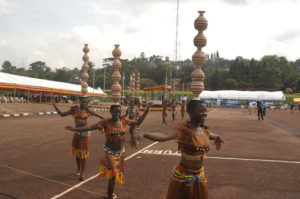 Ndere Cultural Centre: This center is found in Ntinda, a suburb in Kampala. Ndere is got from a Kiganda word “endere” which refers to a flute. The Ndere Cultural Centre is arguably the best place to experience the culture of Uganda as a whole. Traditional performances of tribes from all over Uganda can be enjoyed here. Apart from learning about the culture of the tribes in Uganda, you can order for traditional meals from almost every part of the country. The Ndere Cultural Centre attracts a lot of tourists. It is really the place to be if you are touring Kampala or on a wider cultural trip around the country. You don’t have to worry about accommodation because they have decent accommodation facilities at a good price.
Ndere Cultural Centre: This center is found in Ntinda, a suburb in Kampala. Ndere is got from a Kiganda word “endere” which refers to a flute. The Ndere Cultural Centre is arguably the best place to experience the culture of Uganda as a whole. Traditional performances of tribes from all over Uganda can be enjoyed here. Apart from learning about the culture of the tribes in Uganda, you can order for traditional meals from almost every part of the country. The Ndere Cultural Centre attracts a lot of tourists. It is really the place to be if you are touring Kampala or on a wider cultural trip around the country. You don’t have to worry about accommodation because they have decent accommodation facilities at a good price.
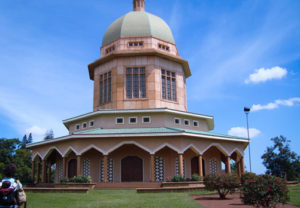 Baha’i Temple: The Bahai Temple in Uganda is the only one of its kind in Africa. It is very popular with both local and international tourists. The eye-catching temple is built on a large 30-hectare piece of land in Kikaya Hill (Kampala). It has beautiful gardens that are ideal for relaxation and meditation. The Baha’i temple is open to all religious groups. The temple is a unique piece of architecture with windows that can filter light coming from the sun. Visit this temple to learn about the Baha’i faith, pray or relax by the beautiful gardens that offer amazing views of Kampala city.
Baha’i Temple: The Bahai Temple in Uganda is the only one of its kind in Africa. It is very popular with both local and international tourists. The eye-catching temple is built on a large 30-hectare piece of land in Kikaya Hill (Kampala). It has beautiful gardens that are ideal for relaxation and meditation. The Baha’i temple is open to all religious groups. The temple is a unique piece of architecture with windows that can filter light coming from the sun. Visit this temple to learn about the Baha’i faith, pray or relax by the beautiful gardens that offer amazing views of Kampala city.

This is the best article I have ever read on internet. It i well organized. God bless the writer.
This is well-thought information about our diverse cultural heritage in Uganda!
Thank you for the information about the culture in Uganda. I wish to work with you after my studies.